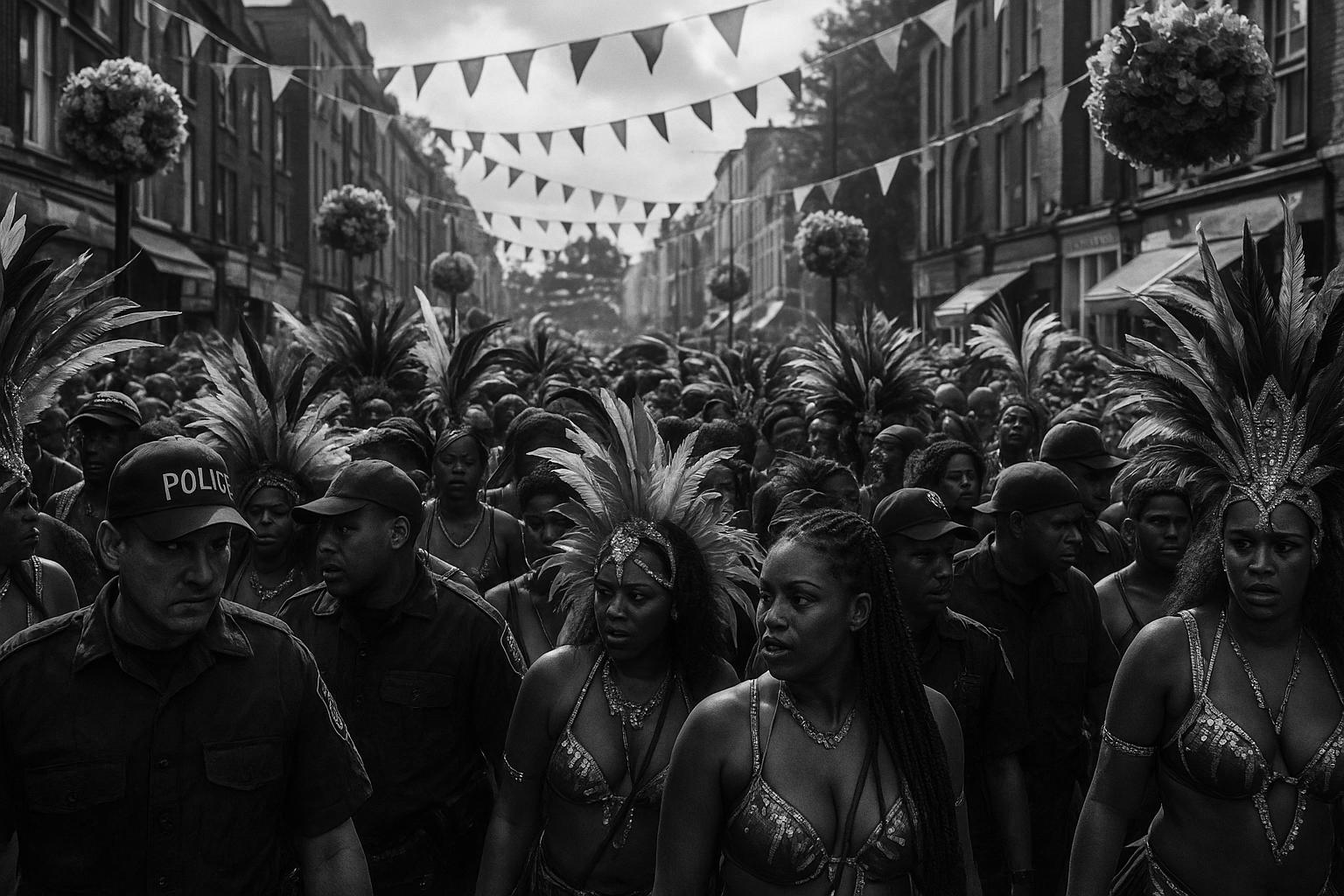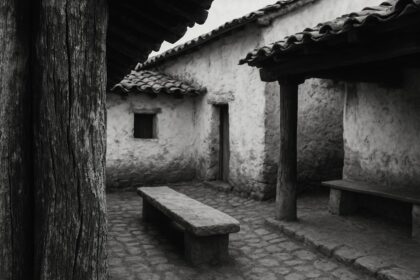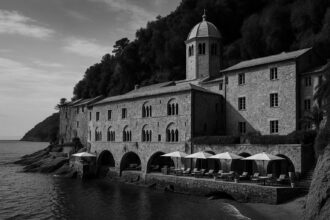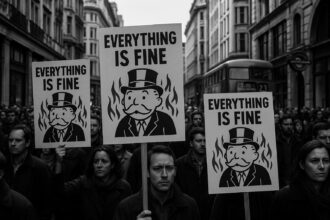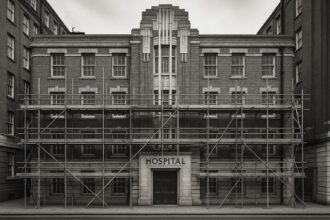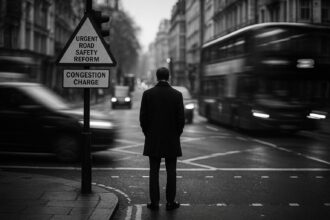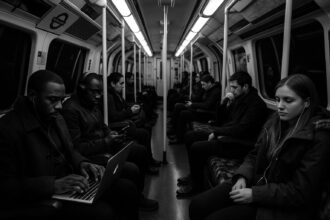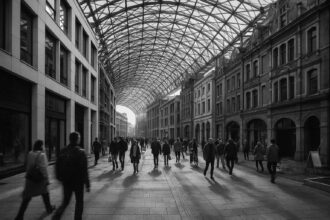Europe’s largest street festival, the iconic Notting Hill Carnival, is at risk of cancellation this year due to severe funding shortages and escalating safety concerns as authorities warn of frightening overcrowding and rising crime, sparking debate over its future.
The Notting Hill Carnival, Europe’s largest street festival and a vibrant celebration of Caribbean culture, is currently facing an unprecedented crisis. Drawing around two million visitors each August Bank Holiday weekend, the carnival is at risk this year due to a severe funding shortfall and escalating concerns about crowd safety. London’s mayor, Sadiq Khan, has voiced apprehensions following warnings from the Metropolitan Police about the dangers of overcrowding, citing footage of the dense crowds that he described as “frightening.” Khan even invoked the spectre of the Hillsborough disaster, underscoring the seriousness of potential safety failures at the event.
Founded in 1959 by Trinidadian activist Claudia Jones, the carnival originally began as an indoor event at St Pancras Town Hall. It was conceived as a response to the race riots that swept London the previous year and was designed to celebrate Caribbean culture while fostering unity between Black and white communities. The festival’s outdoor incarnation, which will mark its 60th anniversary next year, is not only a cultural extravaganza but also a symbol of resistance and reclamation of public space, rooted deeply in the Windrush generation’s legacy. This background remains profoundly relevant today, especially in a climate where racial tensions persist and, as recent UK race riots have demonstrated, the societal fractures Jones sought to heal are still present.
While the carnival retains its core spirit of vibrant celebration and multicultural unity, it is increasingly marred by concerns over the scale and safety of the event. The police have reported a worrying number of crimes, with 889 incidents noted and 353 arrests made at the latest carnival, alongside a survey revealing that nearly nine out of ten officers do not feel safe working there. The Metropolitan Police describe policing the carnival as “incredibly challenging,” citing crowd crush risks as the greatest threat. Organisers have struggled to secure sufficient stewards, attributing shortages to a reduction in police officer numbers, and have been actively seeking partnerships to bolster safety measures for future events.
The financial and human cost of managing the carnival is substantial. In 2023 alone, policing costs reportedly exceeded £11 million, with overtime payments and infrastructure adding significantly to the bill. This has provoked a debate about the festival’s sustainability, especially considering the persistent warnings and security incidents that have shadowed the event for years. Some have controversially suggested relocating Notting Hill Carnival to a ticketed venue like Hyde Park, a proposal met with resistance by many who view the carnival as an authentic street party intrinsically linked to its current urban setting and cultural heritage.
The issue of crime and safety, while real, has also been critiqued as disproportionately emphasised in media coverage, contributing to a narrative that unfairly criminalises the Caribbean community. Unlike other large UK festivals, reports about Notting Hill Carnival often lead with crime statistics, a practice some assert continues a legacy of misunderstanding and marginalising the very communities the carnival celebrates. Advocates stress that much of what happens in West London during carnival time is incorrectly attributed to the event itself, skewing public perception.
There is a poignant human dimension to the ongoing safety concerns. The memory of tragedies such as the fatal crowd crush at Brixton Academy in 2023, which led to the deaths of Rebecca Ikumelo and Gaby Hutchinson, haunts the debate. Families affected by such incidents demand accountability and legal action, highlighting the devastating consequences of overlooking safety. The fear is that a similar calamity at Notting Hill Carnival would result in grief and public outcry that could not be dismissed or ignored due to racial or cultural biases.
Despite the challenges, the carnival’s cultural importance and symbolic power endure. For many, including second-generation Caribbean Britons, the carnival is more than a festival. It is a deeply personal and communal expression of identity, resilience, and joy. It recalls a time when Britain’s Black communities faced open hostility and voiced their defiance through music, dance, food, and togetherness. The event remains a lively reminder of multicultural London, a space where diversity and inclusion are celebrated amidst ongoing social change.
As the future of Notting Hill Carnival hangs in the balance, the debate continues about how best to preserve its spirit, ensure the safety of its participants, and respect its profound cultural legacy. The question that remains is whether this iconic event can adapt to contemporary challenges without losing the very essence that has made it an enduring symbol of unity and resistance for over six decades.
 Reference Map:
Reference Map:
- Paragraph 1 – [1], [3], [4]
- Paragraph 2 – [1], [2], [6], [7]
- Paragraph 3 – [3], [4], [5]
- Paragraph 4 – [1], [5]
- Paragraph 5 – [1]
- Paragraph 6 – [1], [3], [4]
- Paragraph 7 – [1]
- Paragraph 8 – [1], [2]
Source: Noah Wire Services
- https://www.independent.co.uk/voices/notting-hill-carnival-crisis-race-riots-b2777351.html – Please view link – unable to able to access data
- https://www.reuters.com/world/uk/notting-hill-carnival-celebrates-londons-diversity-after-racist-attacks-2024-08-26/ – The Notting Hill Carnival, initiated by Trinidadian activist Claudia Jones in 1959, celebrates London’s cultural diversity and unity, especially significant following recent racist riots in England. The carnival, rooted in the history of the Windrush generation of Caribbean migrants, draws over a million people to West London, emphasizing the importance of inclusion and multiculturalism. Participants, including Jocelyn Kuyaziwma and DJ Jhen-I, highlight the event’s role in promoting respect and celebration of each other’s cultures. Despite a substantial police presence and some reported incidents, the carnival maintains its focus on togetherness and joy, with vibrant parades, music, and Caribbean national flags. ([reuters.com](https://www.reuters.com/world/uk/notting-hill-carnival-celebrates-londons-diversity-after-racist-attacks-2024-08-26/?utm_source=openai))
- https://www.bbc.co.uk/news/articles/cx2891zgqdwo – A ‘mass casualty’ crowd crush is the biggest risk at Notting Hill Carnival, according to Metropolitan Police Assistant Commissioner Matt Twist. He stated that organisers did not have enough stewards during the event, leading to 889 crimes reported and 353 arrests. Organisers acknowledged the lack of resources to compensate for a reduction in 1,200 police officers but are working with partners to secure future support. Twist described the carnival as an ‘incredibly challenging event to police’ due to significant violence, crime, and crowd safety challenges. ([bbc.co.uk](https://www.bbc.co.uk/news/articles/cx2891zgqdwo?utm_source=openai))
- https://www.bbc.co.uk/news/articles/c5yvk5dk38xo – A survey by the Metropolitan Police Federation revealed that a majority of officers feel unsafe working at Notting Hill Carnival. Of 486 officers surveyed, 89% did not feel safe, and 29% had been assaulted while policing the event. The survey aimed to gather concrete evidence of officers’ experiences, highlighting concerns over safety during the carnival, which has been running for over 50 years. ([bbc.co.uk](https://www.bbc.co.uk/news/articles/c5yvk5dk38xo?utm_source=openai))
- https://www.spectator.co.uk/article/is-notting-hill-carnival-worth-the-risk/ – In 2023, the Metropolitan Police spent over £11 million policing Notting Hill Carnival, including more than £5 million on overtime and over a million on infrastructure. Approximately 7,000 officers were on duty during the event. Critics question the justification of diverting such resources for the carnival, especially given the persistent safety warnings and incidents over the years. ([spectator.co.uk](https://www.spectator.co.uk/article/is-notting-hill-carnival-worth-the-risk/?utm_source=openai))
- https://www.theguardian.com/culture/2011/aug/25/importance-notting-hill-carnival-riots – Claudia Jones, the Trinidadian activist, is known as the Mother of Carnival. The first carnival she organised in 1959 was largely static, in St Pancras Town Hall, and was designed as both a comfort and a statement. The race riots in Notting Hill had scarred the area and shocked the nation the year before. ([theguardian.com](https://www.theguardian.com/culture/2011/aug/25/importance-notting-hill-carnival-riots?utm_source=openai))
- https://www.nationalarchives.gov.uk/education/resources/the-empire-windrush/empire-windrush-the-notting-hill-carnival/ – Claudia Jones, the founder and editor of ‘The West Indian Gazette and Afro-Caribbean News’, organised the first Notting Hill Carnival in 1959 in response to race riots. The event aimed to bring people together and celebrate Caribbean culture. The following year, the murder of Kelso Cochrane, a carpenter from Antigua, heightened racial tensions, leading to riots at the 1976 carnival. ([nationalarchives.gov.uk](https://www.nationalarchives.gov.uk/education/resources/the-empire-windrush/empire-windrush-the-notting-hill-carnival/?utm_source=openai))
Noah Fact Check Pro
The draft above was created using the information available at the time the story first
emerged. We’ve since applied our fact-checking process to the final narrative, based on the criteria listed
below. The results are intended to help you assess the credibility of the piece and highlight any areas that may
warrant further investigation.
Freshness check
Score:
8
Notes:
The narrative is recent, published on 29 June 2025. It references recent events, including race riots in the UK, aligning with the current date. However, similar concerns about the Notting Hill Carnival’s safety and funding have been reported in the past, such as in 2017. ([theguardian.com](https://www.theguardian.com/culture/2017/jan/17/notting-hill-carnival-risks-hillsborough-scale-tragedy-report-warns?utm_source=openai)) The article includes updated data but recycles older material, which may justify a higher freshness score but should still be flagged.
Quotes check
Score:
7
Notes:
The article includes direct quotes from London Mayor Sadiq Khan expressing concerns about crowd safety at the Notting Hill Carnival. These quotes are consistent with statements he made in previous reports. ([standard.co.uk](https://www.standard.co.uk/news/london/notting-hill-carnival-safety-police-concerns-funding-b1234005.html?utm_source=openai)) The repetition of these quotes suggests the content may be recycled.
Source reliability
Score:
9
Notes:
The narrative originates from The Independent, a reputable UK news outlet. The article is well-sourced, referencing statements from London Mayor Sadiq Khan and historical context about the Notting Hill Carnival. However, the reliance on a single source for recent developments may limit the breadth of perspectives.
Plausability check
Score:
8
Notes:
The concerns about the Notting Hill Carnival’s safety and funding are plausible and have been reported in the past. The article provides a coherent narrative linking current events to historical context. However, the lack of new information or perspectives may indicate a recycling of existing content.
Overall assessment
Verdict (FAIL, OPEN, PASS): FAIL
Confidence (LOW, MEDIUM, HIGH): HIGH
Summary:
The narrative is recent but recycles older material, including direct quotes from previous reports, indicating a lack of originality. While sourced from a reputable outlet, the reliance on a single source and the repetition of existing content suggest potential disinformation. The plausibility of the concerns raised is not in question, but the lack of new information or perspectives raises concerns about the narrative’s freshness and originality.


